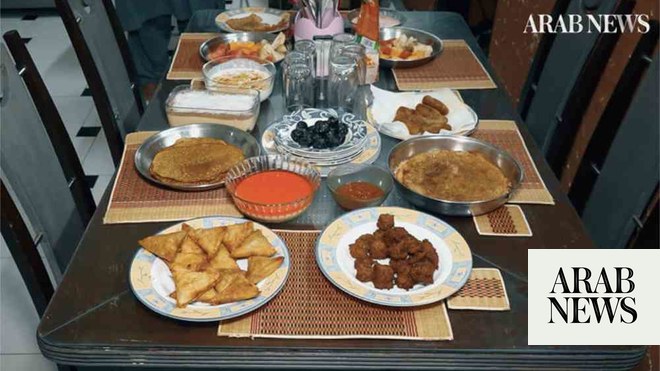
Memons, a Muslim ethnic group, have their origins in small towns and villages of the Kutch, Gujarat and Kathiawad regions of India
Cuisine has many simple, easy-to-make recipes passed down over generations that community members have preserved
KARACHI: Every Ramadan, Memon households in the southern Pakistani city of Karachi revisit easy-to-make recipes passed down through generations, bringing a sense of family and nostalgia to suhoor and iftar table spreads.
Memons, a Muslim ethnic group, have their origins in small towns and villages of the Kutch, Gujarat and Kathiawad regions of India.
After the partition of British India in 1947 and the creation of Pakistan, a large number of Memons migrated to Pakistan, especially to the port city of Karachi.
Memons have traditionally been a mercantile community, and began significant migration beyond the borders of India in the 18th and 19th centuries. Thus, Memon food has been widely influenced by South Indian, Bengali and Arab cuisine as Memon ancestors often traveled through these regions as traders and adopted their culinary methods to give a twist to their original recipes.
“We are from Bagasara, India. It is a small town in Gujarat. When (my) grandmothers migrated from there at the time of partition, we got these recipes from there,” Yasir Billoo, a 48-year-old food consultant from the Memon community, told Arab News.
“We prefer keeping it (the recipe) simple but they carry a punch of nostalgia. (They) remind us of our nani, dadi (maternal and paternal grandmothers).”
A respected community member, Saeeda Haroon, 80, said that the taste of Memoni dishes was enhanced by the use of coriander, mint and other herbs.
“We toss the food really well while cooking. We add coriander, mint and spring onion to add freshness to the food,” Haroon told Arab News.
“We don’t use a lot of oil, keeping health concerns in mind.”
Billoo said there were quite a few dishes in Memoni cuisine that added a special value to iftar platters and get-togethers for Ramadan evening meals.
The main fried items made in Memon households during Ramadan include “bajray ke kebab” (millet flour kebabs), which is a variant of “nargisi kebab” without the egg, “lambe kebab” (cylindrical-shaped kebabs), and “purey,” a type of paper-thin pancake.
Billoo said that the millet flour kebabs were made in rough, round shapes, with spring onions added for a fresh taste. Lambe kebabs were made of minced beef, bread, eggs, herbs and spices, and then shaped into long cylinders, a recipe passed down since his grandmother’s time.
Billoo also talked about “chilley” or “purey,” and described them as a “very unique and significant part of the Memoni cuisine.”
“Our savory and sweet chillas, which we refer to as ‘purey,’ with dipped sugar, and the (savory) ones that are made with egg, are (cooked) a lot during Ramadan,” he said.
“It is paper-thin. We can have it for breakfast too. It is usually a running dish in Ramadan.”
Mehrun Rafiq, a 75-year-old grandmother, said that Memon cuisine was considered good for health in the past because of the purity of its ingredients.
“Memoni cuisine made decades ago in our households in India was very good for health,” Rafiq told Arab News. “It consisted of ingredients such as flour, eggs and ‘asli ghee’ that would be particularly made for women who had just given birth to babies.”
Speaking about Memoni desserts preferred during Ramadan, Billoo said faluda, or vermicelli noodles made in sweetened milk, was the main item.
The dish is made with China grass powder, sugar and milk or water. Rooh Afza, a sweet red syrup popular in India and Pakistan, is used to add color, taste and a sweet aroma to the mixture.
Billo saidd that Memoni recipes were easy to make and many could be prepared in advance to be consumed at iftar during Ramadan.
“Personally, we prefer not to make any changes to the recipes. (They’re) very simplistic,” he said. “The beauty of our Memoni cuisine is that it has simple flavors. A mix of four to five ingredients makes something incredible.”












